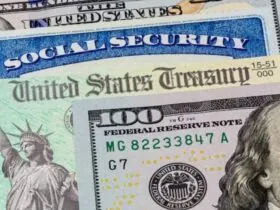Navigating student loan forgiveness can be a complex journey, especially when dealing with servicers like Navient (now Aidvantage for federal loans). Whether you have federal or private loans, understanding the available forgiveness options is essential to take the right steps toward financial relief. Here’s a breakdown of the process and key forgiveness programs you may be eligible for.
Step 1: Determine Loan Type
This Article Includes [hide]
The first step in pursuing student loan forgiveness is identifying whether your loans are federal or private. This distinction is crucial because it influences your eligibility for various forgiveness programs. Federal loans typically offer more forgiveness opportunities, while private loans may qualify for specific state or profession-based programs.
To verify your loan type, contact Navient (or Aidvantage for federal loans) or review your account on the National Student Loan Data System (NSLDS).
The @CFPB action put an end to Navient's abusive and illegal actions and ordered the student loan servicer to return millions to harmed borrowers. #ProtectConsumers #DefendCFPB #DefendStudents #CancelStudentDebt pic.twitter.com/Xc0Fdxca2c
— NCLC (@NCLC4consumers) December 11, 2024
Federal Loan Forgiveness Programs
If you have federal student loans, there are several forgiveness programs available. Here are the most notable ones:
1. Income-Driven Repayment (IDR) Forgiveness
Federal borrowers can enroll in an Income-Driven Repayment (IDR) plan, such as Pay As You Earn (PAYE), Saving on a Valuable Education (SAVE, formerly REPAYE), or Income-Based Repayment (IBR). These plans cap monthly payments based on your income and family size. After 20 to 25 years of qualifying payments, the remaining loan balance may be forgiven.
Important: Be aware that the forgiven amount might be considered taxable income, so it’s essential to plan for the potential tax implications.
2. Public Service Loan Forgiveness (PSLF)
Public Service Loan Forgiveness (PSLF) offers significant relief to borrowers who work in government or nonprofit organizations. After making 120 qualifying payments (typically over 10 years), the remaining loan balance is forgiven. Even if your loans were originally serviced by Navient, you can apply for PSLF through StudentAid.gov, and your loans will transfer to the appropriate servicer for PSLF.
3. Teacher Loan Forgiveness
Teachers working in qualifying low-income schools may be eligible for up to $17,500 in loan forgiveness. However, be mindful that Teacher Loan Forgiveness and PSLF can conflict, so it’s important to choose the best option based on your circumstances.
CFPB Bans Navient from Federal Student Loan Servicing and Orders the Company to Pay $120 Million for Wide-Ranging Student Lending Failures — https://t.co/2uU8HmDdpd via @CFPB
— Miriam Cronkhite ✍️🎤🏖♏️🏔 (@MiriamCronkhite) December 11, 2024
4. Loan Discharge Options
There are various loan discharge options for certain circumstances, such as:
- Total and Permanent Disability (TPD): If you are permanently disabled, you may qualify for a discharge of your federal loans.
- School Closures: If your school closed while you were enrolled or shortly after you left, you may be eligible for a discharge.
- Borrower Defense to Repayment: This applies if you attended a school that engaged in fraudulent activities.
Private Loan Forgiveness Opportunities
Private loans typically don’t offer the same forgiveness options as federal loans, but there are still potential avenues for relief:
One of the most significant opportunities for private loan borrowers came with the 2022 Navient Settlement. As part of the settlement, $1.7 billion in private loan debt was canceled for borrowers who had subprime loans and faced delinquency. If you were eligible, you should have received automatic notification by July 2022.
State and Profession-Specific Forgiveness Programs
In addition to the Navient Settlement, some state and profession-specific forgiveness programs may apply to private loans. These programs vary by location and profession, so it’s worth researching options based on where you live and work.
In addition to the 2022 settlement, Navient also agreed to a $120 million settlement in 2024 to address mishandling of federal loans. This settlement aims to offer restitution to borrowers who were harmed by practices such as incorrect payment amounts or misinformation regarding Public Service Loan Forgiveness (PSLF). Eligible borrowers are identified automatically, meaning no application is necessary.
Refinancing as a Last Resort
If none of the forgiveness options are available to you, refinancing your Navient loans might help reduce your interest rate and monthly payments. However, keep in mind that refinancing federal loans into private loans eliminates eligibility for federal forgiveness programs.
Conclusion
The path to student loan forgiveness, particularly with Navient, can be challenging, but it’s possible with careful planning and understanding of your loan type and available options. Start by identifying whether your loans are federal or private, and explore the forgiveness programs that match your situation. With the right approach, you can move closer to financial freedom and relief from student loan debt.







Leave a Reply